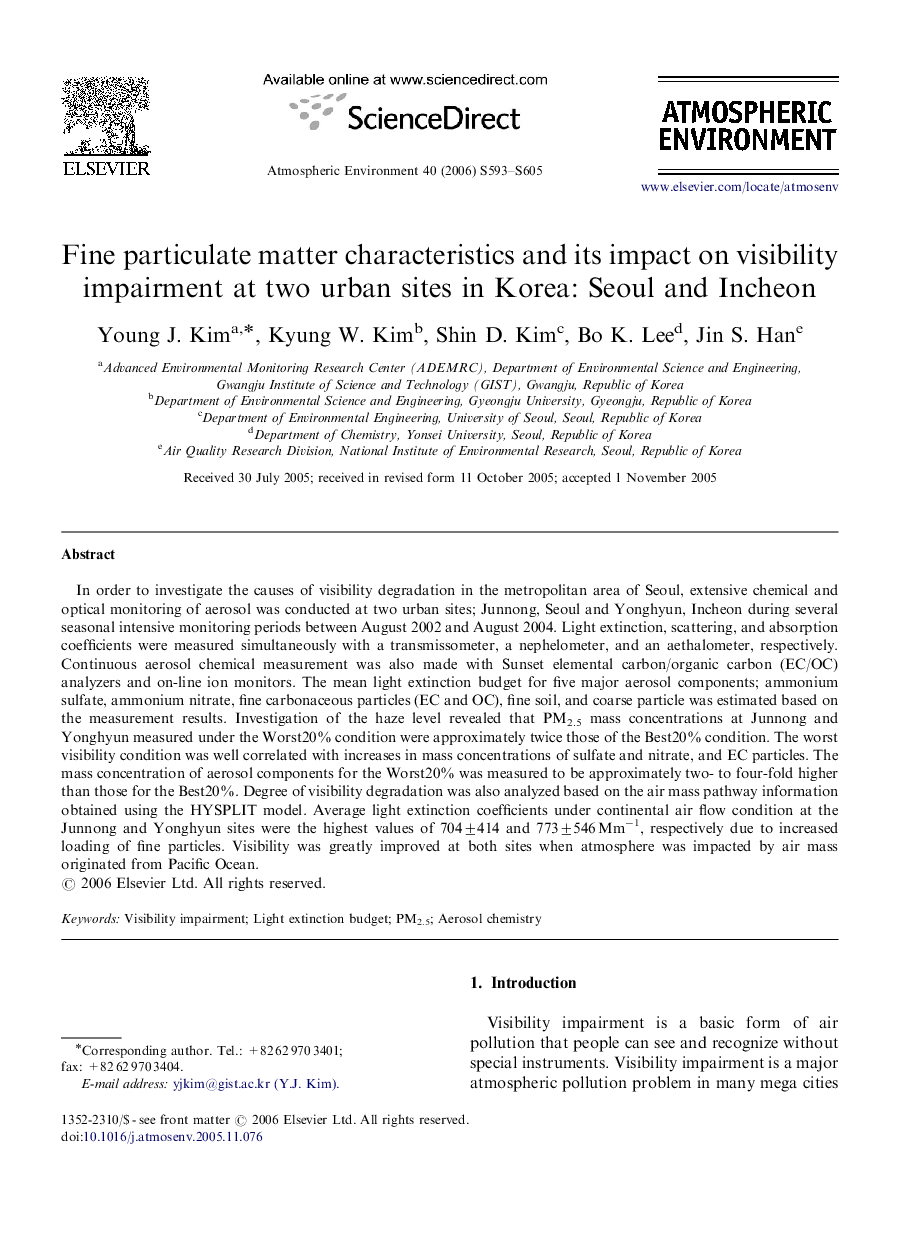| Article ID | Journal | Published Year | Pages | File Type |
|---|---|---|---|---|
| 4445127 | Atmospheric Environment | 2006 | 13 Pages |
In order to investigate the causes of visibility degradation in the metropolitan area of Seoul, extensive chemical and optical monitoring of aerosol was conducted at two urban sites; Junnong, Seoul and Yonghyun, Incheon during several seasonal intensive monitoring periods between August 2002 and August 2004. Light extinction, scattering, and absorption coefficients were measured simultaneously with a transmissometer, a nephelometer, and an aethalometer, respectively. Continuous aerosol chemical measurement was also made with Sunset elemental carbon/organic carbon (EC/OC) analyzers and on-line ion monitors. The mean light extinction budget for five major aerosol components; ammonium sulfate, ammonium nitrate, fine carbonaceous particles (EC and OC), fine soil, and coarse particle was estimated based on the measurement results. Investigation of the haze level revealed that PM2.5 mass concentrations at Junnong and Yonghyun measured under the Worst20% condition were approximately twice those of the Best20% condition. The worst visibility condition was well correlated with increases in mass concentrations of sulfate and nitrate, and EC particles. The mass concentration of aerosol components for the Worst20% was measured to be approximately two- to four-fold higher than those for the Best20%. Degree of visibility degradation was also analyzed based on the air mass pathway information obtained using the HYSPLIT model. Average light extinction coefficients under continental air flow condition at the Junnong and Yonghyun sites were the highest values of 704±414 and 773±546 Mm−1, respectively due to increased loading of fine particles. Visibility was greatly improved at both sites when atmosphere was impacted by air mass originated from Pacific Ocean.
